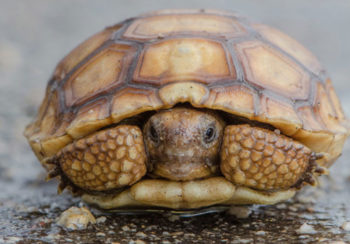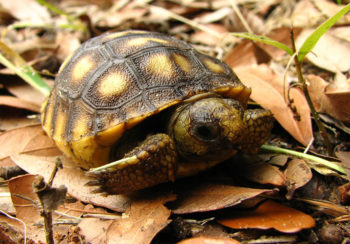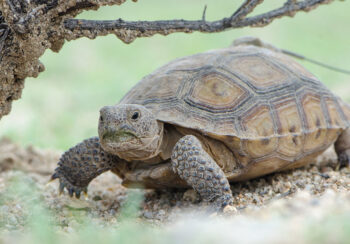Trekking through two military installations in the Florida panhandle to study gopher tortoise behavior seemed like a pretty straightforward assignment, but Nicole White found something interesting. Wildlife camera footage captured the unexpected—20 species of birds not known for visiting tortoise burrows were making themselves at home.
White, then a graduate student at the University of Georgia’s Savannah River Ecology Laboratory and Warnell School of Forestry and Natural Resources, expected to see tortoises going about their daily routine. Instead, White and co-author Tracey Tuberville saw many species of animals visiting the tortoise burrows, including a surprising number of birds.
Cameras dispersed throughout the protected and isolated areas of Naval Air Station Whiting and its outlying landing field revealed a total of 33 bird species—including the northern cardinal, the Savannah sparrow, the song sparrow, the red-tailed hawk and the great horned owl—who made close to 600 visits to the burrows at the installations.
Comparing previous studies to her observations, White determined that 60 percent of the bird species at the burrows had never been documented as visitors of gopher tortoise burrows.
“Most studies record burrow associates through in-person observations, and they tend to be relatively infrequent,” White said. “We were seeing what seemed to us as lots of visits by many species of animals.”
Although most species utilize these structures—up to 20 feet long and 10 feet deep, as well as insulated—for shelter, footage revealed that the birds were primarily foraging and dust bathing on the burrow’s apron, the mound of sand that leads to the entrance of the burrow.
Dust bathing aids in feather maintenance, parasite control and temperature regulation.
The research team said the burrow’s apron seems to serve as a lure, attracting an abundant diversity of invertebrate prey.
“One potential reason that birds are visiting may be that visiting invertebrates provide lots of options for breakfast, lunch and dinner,” White said.
The aprons are also a conspicuous feature in the landscape, providing a visual cue for birds as they search overhead for food, said Tuberville, associate research scientist at SREL and adjunct faculty at Warnell.
“This study underscores the importance of gopher tortoise conservation in the Southeast and not just for the gopher tortoise itself, but for the impacts it may have and the resources it provides for other species,” White said.
The study also sheds light on the importance of small military lands in supporting biodiversity, findings that are no surprise to Robby Smith. The wildlife biologist serves as natural resources section head over 15 naval facilities in the Southeast, including NAS Whiting Field and OLF Holley, the sites for the study. Smith said the cameras simply allowed them to connect the dots.
“I’ve seen the crows and mourning doves on the apron and red-tailed hawks perched on a tree above the burrow,” Smith said. “The great diversity of bird species that are drawn to the area around the burrow for foraging and shelter can definitely be attributed to the vast number and variety of species that occupy the gopher tortoise burrow and the areas around it.”
The U.S. Department of Defense spends more than $334 million annually to protect and preserve lands for wildlife conservation, according to Smith. The longleaf pine and scrub habitat that make up much of this landscape are a vital component for the gopher tortoise’s survival.
For more information, read the full study at https://www.bioone.org/doi/abs/10.1676/16-138.1.






